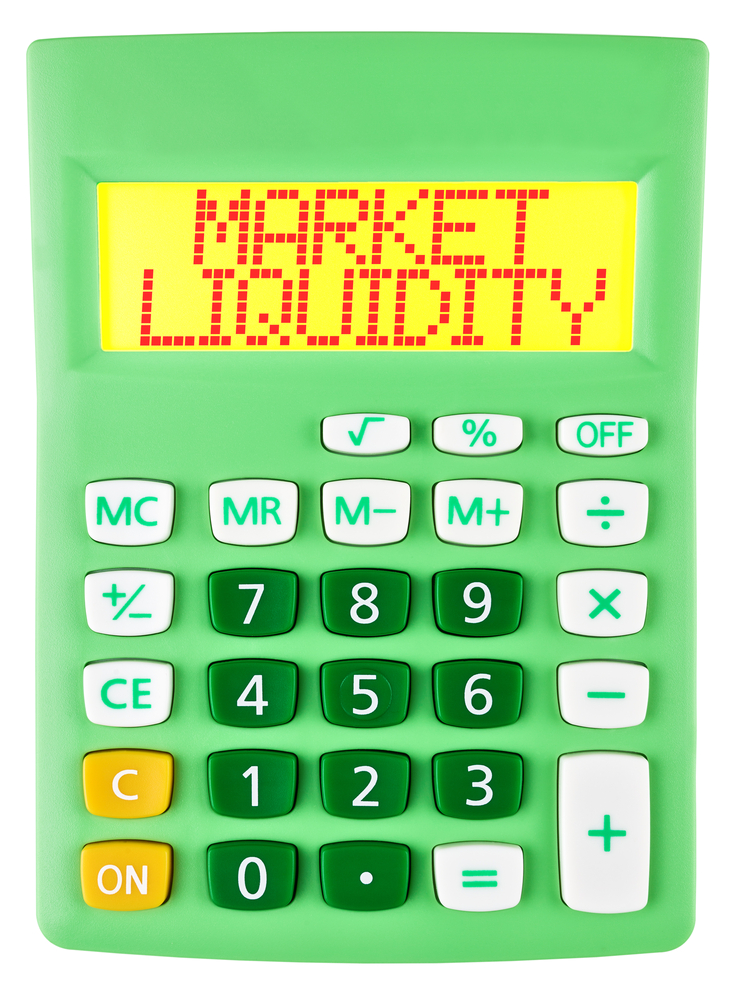Liquidity is more important than just a bid/ask spread…
As Howard Marks explains:
It’s often a mistake to say a particular asset is either liquid or illiquid. Usually an asset isn’t “liquid” or “illiquid” by its nature. Liquidity is ephemeral: it can come and go. An asset’s liquidity can increase or decrease with what’s going on in the market. One day it can be easy to sell, and the next day hard. Or one day it can be easy to sell but hard to buy, and the next day easy to buy but hard to sell.
In other words, the liquidity of an asset often depends on which way you want to go . . . and which way everyone else wants to go. If you want to sell when everyone else wants to buy, you’re likely to find your position is highly liquid: you can sell it quickly, and at a price equal to or above the last transaction. But if you want to sell when everyone else wants to sell, you may find your position is totally illiquid: selling may take a long time, or require accepting a big discount, or both. If that’s the case – and I’m sure it is – then the asset can’t be described as being either liquid or illiquid. It’s entirely situational.
Most traders and investors don’t worry about liquidity. And that’s because, as Marks notes, “liquidity is ephemeral”. It’s always changing. Most of the time its abundant… except when you need it the most. And that’s when you find yourself in trouble.
Liquidity is risk. That’s how it should be looked at in your analysis process.
Here’s the currency specialist’s take on liquidity and risk, from Steven Drobny’s book; Inside the House of Money:
I have this theory on liquidity, relative value, and markets that I call my “frozen ice theory.” It also highlights the dangers of negative gamma — again! The frozen ice theory goes like this: When a lake freezes, it’s thicker at the sides than at the middle right?
Go back to 1995 when the Japanese yen was trading at an all-time low of 80 to the dollar. Everyone was blaming everything that was wrong in the world on the yen’s strength. The economy in Japan was sliding, they had repatriated all their money, politicians were protesting the level — bloody, bloody blah. It was clear to everyone that the dollar/yen exchange rate was the wrong price at 80.
Eventually, traders started buying dollar/yen in anticipation of yen weakness. Smart trade, right trade. In the frozen ice theory, this occurs at the sides of the lake where the ice is thickest. The trade is solid and the theory behind it is sound.
Dollar/yen started to go up as expected and the people involved cashed in their profits, but they took their profits too early. As dollar/yen continued to rally, they were left watching their macro call run away from them without position. By now dollar/yen has gone from 80 to 100 and it looks to be on its way to 120, but everyone took profit when it was in the 90s.
Traders have a very hard time buying something at a greater value than what they just took profit on, so they look for a proxy, or relative value. They buy dollar/Thai and go through the same process. Then it’s dollar/Malay, dollar/Korea, dollar/Phillippine peso, and so on.
Next thing you know, everyone and their grandmother is long dollar/Taiwan, dollar/rupee, and dollar/rubbish, yet they don’t remember why they have dollar/Asia on in the first place. Nobody is long dollar/yen anymore and it’s at 135.
Everyone has rotated out toward the middle of the lake where the ice is thinnest. In essence, they’ve all moved out the spectrum of, guess what, our old friends: liquidity and credit. Suddenly, dollar/yen (the liquid stuff) starts to reverse. Game over. Everyone stops, looks around, and finally notices everyone is surrounded by people with the same illiquid stuff on the thin ice. People start trying to get out and asking for prices in size. Yeah, right. How about down here, buddy? No, off that, actually how about down here? And so on and so on.
The weaker credits always have the least liquidity and the so-called highest returns. All the crap rallies at the end of a bull market, which is how you know it’s near the end. When triple rubbish like wingandaprayer.com is suddenly worth more than the great, long-standing companies, you have to stop and question things.
It happens time and time again in the markets. Everybody’s standing there in the middle of the thin ice with pretty much the same position, having forgotten why they put the trade on in the first place. The reason they’ve forgotten is because they don’t have the original trade on anymore because they got out too early. They’re in, they’re out. They missed the main move so they buy something else, and then something else and something else. We’ve all done it. Everybody does it. Everybody runs a vicarious relative value book in how they trade. The yen in the second half of the 1990s was a classic case.
It’s always important to look back at why you did something. If you don’t, you start doing what economists do, which is raise a price target after it gets hit.
This thin ice argument works when you look at funds of hedge funds as well. Institutional hedge fund investors often allocate to a hedge fund only after it has had a solid run, when performance is peaking. Investors who got in at the beginning can weather a drawdown because they’ve made some money, but institutional investors usually aren’t there at the beginning. They get exposure late in the game and wind up getting hurt.
Understand why you’re in a position and keep an eye on the exit.
Don’t ever skate on thin ice.
For more information about trading best practices, please click here.




